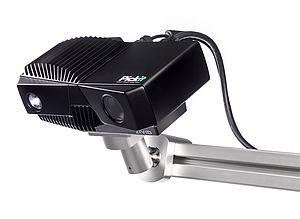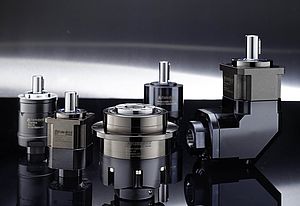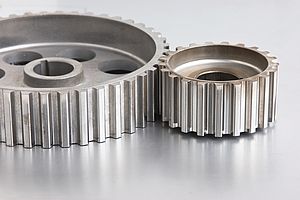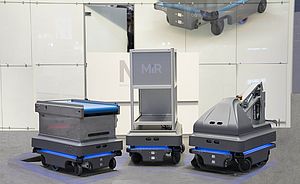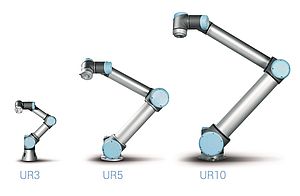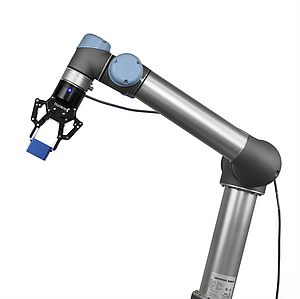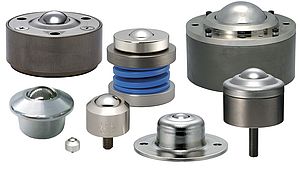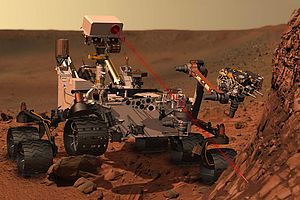IEN Europe: Could you please describe your product portfolio to our readers?
Mr. Williamson: R. A. Rodriguez was founded to supply quality, precision engineering components and expert technical support to manufacturing industry, a task it has performed for more than 40 years. The company continues to evolve in line with technological developments and now broadly divides its product portfolio into four main groups – engineering components; bearings; gears & drives and automation. Engineering components covers a broad variety of products including conveyor mechanisms, retaining rings and linear technology that extends from precision components through to complete assemblies.
Kaydon bearings is a brand that has been associated with R. A. Rodriguez from the start. Over the years, countless applications have benefited from the weight and space saving qualities of the Reali-Slim® design; turntable bearings as well as modified standard and completely bespoke bearings are within the scope of this range. R. A. Rodriguez also manufactures its own linear technology and turntable bearing products. As European master distributor for KHK gears, the company supplies one of the most extensive ranges of gears on the market; the lion’s share is available ex-stock via its online shop. It also seeks out products that provide unique characteristics and this is evident in our drive products; the Grob push/pull linear chain and Framo Compacta geared motors are good examples.
Completing the product groups is automation and one which is growing rapidly. R. A. Rodriguez supplies a wide variety of industrial robot and automated solutions for a myriad of customer applications. The company has ‘preferred supplier’ status with Universal Robots and stocks a wide choice of Robotiq grippers. It also has a highly successful working partnership with the programmable linear axes manufacturer, IEF Werner and MAFU, the specialist in disentangling technology.
IEN Europe: How is the distribution between your different business areas and how do you expect them to develop in the future?
Mr. Williamson: Since 2011, R. A. Rodriguez has been steadily adding automation products to its portfolio with great success. Sales have increased year on year as manufacturers in the UK and Ireland seek to enhance their competitiveness through automation. This consistent growth has resulted in us strategically separating this division of our company and now all automation sales are the responsibility of RARUK Automation Limited. It’s a company dedicated to developing a group of automation products with a unique edge.
This arrangement allows us to tool-up for the growing demands of automation while not losing sight of our traditional strengths as a supplier of high quality transmission components. In other words, it gives us the freedom to develop a framework that best supports both markets.
IEN Europe: What are the main industry sectors you are providing for?
Mr. Williamson: The breadth of the R. A. Rodriguez and RARUK Automation product ranges allows us to support a wide range of industries and engineering applications. The fields in which we are particularly active are offshore wind and renewable energy; food processing; medical device manufacture; aerospace; motorsport and machine tools both in terms of system design and machine tending.
IEN Europe: As a British company, how do you see the challenges of Brexit for the evolution of your business?
Mr. Williamson: As an import and export business we will need to adapt as the trading mechanisms change over the coming years but aside from that our focus is to seek out the opportunities this new reality brings.
There is no doubt that UK manufacturers will need to increase their competitiveness on the world stage and automation has a very important part to play in this regard. It will be instrumental in boosting productivity and ensuring consistent quality and there is even greater potential for our collaborative robots because of their application flexibility and mobility. They will also help to compensate for any shortage in low cost labour that may result from new rules. It’s not just the automation side of our business that stands to benefit either. As UK manufacturing output grows, so too will demand for our engineering components and systems. And even if the unit cost of those components may be slightly higher in years to come with exchange rate fluctuations, higher volumes will increase our negotiating power.
IEN Europe: In the field of automation you are working with cobots (collaborative robots). Can you give one or two typical examples for applications?
Mr. Williamson: The Filter Design Company specialises in all things filter-related and its products are in growing demand. It had concerns about using a manually operated glue gun on its respiratory filter at an elevated throughput, particularly with regard to consistency of application and the potential for operator strain. As a result, it chose to invest in a Universal Robot table-top UR3 robotic arm that could be integrated without guarding.
The respiratory filter contains pleated, glass media and is fabricated into a rectangle before being mated with a plastic frame featuring a glue channel on a complex curve. Now installed complete with Robotiq two-finger gripper, the UR3 manipulates the components and presents it to the automatic glue gun ready for adhesive application. Initially bought to meet a production demand of 4,000 filters per week, the UR system is now processing 10,000 units per week with a payback of less than six months. A second system has since been installed in the company’s test facility.
Operator fatigue was also the concern of rope cleat manufacturer, Clamcleats. The application here is de-gating injection moulded components, a task that was previously undertaken manually. To reduce risk of injury, the company considered a dedicated press but the cost of tooling involved for each type and size of cleat made it unviable; a Universal Robot proved the ideal alternative.
As the robot arm doesn’t need traditional guarding and could be applied to a variety of applications, it gave Clamcleats the confidence to automate.
IEN Europe: Where do you see the advantages of this approach, especially for smaller companies?
Mr. Williamson: The time when large industrial robots were primarily part of assembly in the automotive industry are over and have been so for a long time. Automation technology is now being implemented across the spectrum but cost, inflexibility and worker safety are still concerns commonly expressed in the SME community. For these manufacturers in particular, collaborative robots are proving to be a game-changer. Firstly, they are eminently affordable and not just in terms of capital investment. They are very easy to programme so the overall cost of ownership and operation is much lower than previous generation robots.
Easy programmability and mobility also means that a cobot can be cost-effectively applied to a broad variety of different tasks; a benefit which, for many, make the cobot a ‘safe purchase’. A wide choice of grippers and accessories are also available for this purpose. And complementing this flexibility is the fact that cobots require no safety guarding, an advantage that has driven the take-up of automation among SMEs across the world.




